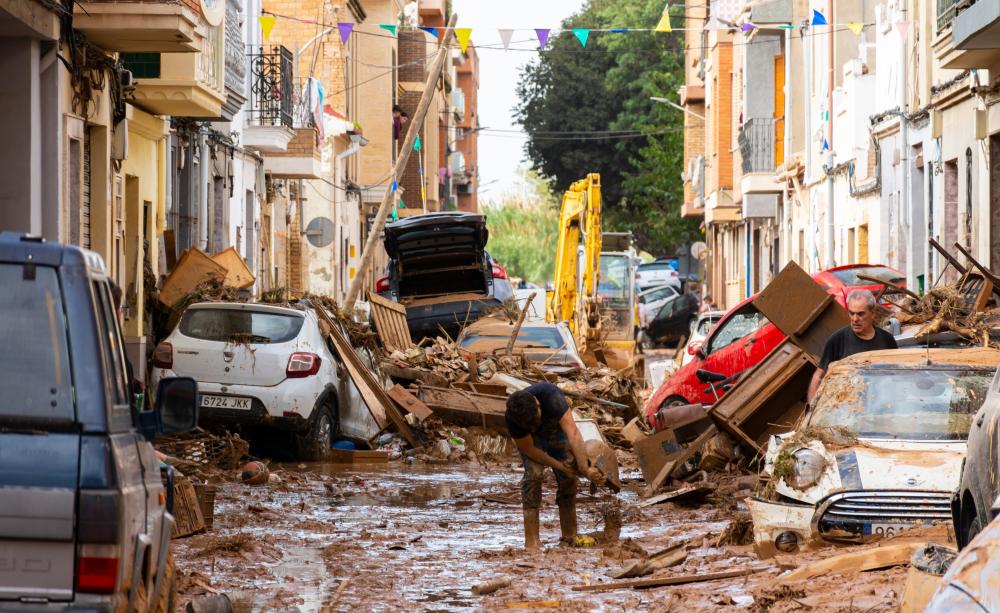Climate change and land use change are equal partners in creating extreme weather at the regional level.
The floods in Spain dominated headlines a couple of weeks ago, painting a picture of destruction: cars swept away, streets transformed into rivers, and communities reeling from the loss of homes and livelihoods.
Since then, similar scenes have taken place in Portugal and Italy. With over 200 mortalities, and thousands still missing in Spain alone, it’s a grim reminder of Europe’s vulnerability to the climate crisis.
The discourse on social media and in political circles has fixated on these floods as yet another consequence of climate change, a karmic return on decades of burning fossil fuels. But this singular narrative overlooks a crucial dimension: these disasters also reveal regional ecosystems pushed to the brink by nature loss.
Early warnings
In the 1990s, Millán Millán, a Spanish climate scientist with an eye for patterns, observed an unsettling trend: the regular summer storms that farmers in the Mediterranean region relied upon for rainfall were vanishing.
Over decades of study, Millán discovered that this change was no coincidence: the degradation of nature through poorly-planned development and industrial agriculture was completely disrupting local water and weather cycles.
Every time a forest that trapped moisture and encouraged rainfall, or a wetland that buffered and regulated water movement, was destroyed, the natural systems that stabilised regional weather lost a limb.
Millán made a crucial discovery: climate change and land use change were equal partners in creating extreme weather at the regional level. In other words, the destruction of the natural systems that stabilised weather was not just making the Mediterranean more vulnerable to climate change – it was actively contributing to it.
When Millan started his investigations in the 1990s, he was confronted with a local water and weather system already in collapse. Millán predicted a rise in extreme weather as a result, including catastrophic floods like those in Valencia.
Missing link
What does all this mean for dealing with today’s disaster? Millán’s findings point to a complex truth: while global climate change is a rising threat, nature degradation is its partner in crime. Our forests, fields, and oceans are more than just a carbon sink: they are powerful climate players.
Climate change and land use change are equal partners in creating extreme weather at the regional level.
Media coverage has criticised government failures to adequately prepare and react to Valencia’s floods - from building in flood-prone areas, to the dismantling of the Valencian Emergency Unit, to the delayed disaster response.
These critiques are right – but they miss the crux of the issue. When we pave over forests to expand our cities, drain coastal wetlands to build petrol plants, and allow intensive farming practices to pollute and destroy our rivers - as has happened in Valencia in recent decades - we hammer the final nail in nature’s coffin. The result? More fuel on the fire when it comes to extreme weather.
Holistic
Europe’s recent floods offer a painful lesson. Yes, combating climate change is non-negotiable. But framing climate action as solely about emissions neglects the importance of natural ecosystems in mitigation and adaptation.
The collapse of local ecosystems and the ensuing disruption of weather patterns at regional scale is as significant as the rise in global temperatures. Europe’s recent floods have shown us that without healthy natural ecosystems, the resilience of entire regions – and the communities that depend upon them – is compromised.
The solution is a holistic approach that recognises the interconnectedness of climate, ecosystems, and societies. This is where restoring nature comes into play.
More than ever, we need to regenerate natural ecosystems with communities in the driving seat, reconnecting fragmented habitats, revitalising vital natural areas like wetlands, and ensuring that human development works in harmony with nature, rather than against it.
Let’s be clear: it’s not that human development is all bad. We just need to make our cities, towns, and factories more nature-inclusive, allowing ample breathing space for the forests, marshes, and reefs that, ultimately, underpin our societies.
As Millan himself emphasised, “You need to do development in the right way: interrupt the water cycle as little as possible and […] invest long-term to recover the system.” We need to do as Millán did: see the bigger picture.
This Author
Lily Maxwell-Lwin is head of advocacy and engagement at Commonland, a global not-for-profit organisation that supports local communities to restore landscapes and regenerate food systems at scale. An urban planner by training, she has a background in urban sustainability issues and experience working in a range of industries - from digital start-ups to local government. Through advocacy and engagement, she is working to create a world where local communities thrive in harmony with nature, producing healthy food in healthy landscapes.




